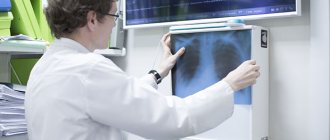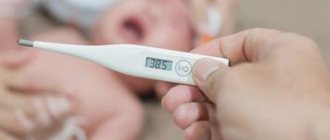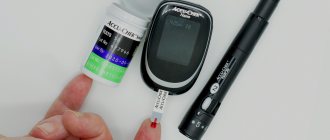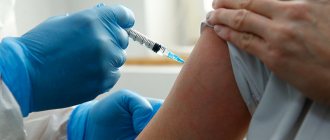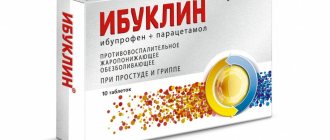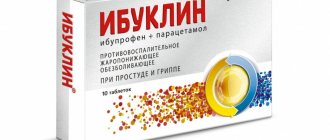Causes
- smoking (active and passive inhalation of tobacco smoke),
- regular inhalation of dust, combustion products (harmful industries)
Unfortunately, this disease is incurable, which is why the World Health Organization is actively calling on countries to combat tobacco smoking and conduct preventive and educational programs for the population. After all, you can prevent the threat of COPD by quitting smoking.
And even if the disease is incurable, you can cope with its manifestations and transfer its course into a controlled direction, the main thing is not to self-medicate and turn to qualified specialists in a timely manner.
Don't forget that almost all cases of COPD are preventable. And you can protect yourself by giving up the bad habit of smoking tobacco. Due to the fact that previously men smoked much more than women, the disease was considered mostly male, but with the widespread spread of this bad habit among women, the number of identified cases of COPD among them has also increased. Therefore, in our time, the gender division is not so clearly visible. People 40-50 years old and older are at risk.
COPD (chronic obstructive pulmonary disease)
COPD is chronic obstructive pulmonary disease. Up to 10% of the population suffers from this disease today. Pathology is moving up in the mortality ranking and today is already in 3rd place.
What is COPD?
COPD is a chronic inflammatory disease characterized by damage to the small bronchi, narrowing of their lumen and breathing problems. The result is a deficiency of oxygen (hypoxia) and an excess of carbon dioxide (hypercapnia).
Against this background, emphysema of the lungs gradually develops (decreased elasticity, they seem to freeze in the inhalation phase), chronic bronchitis and respiratory failure. The insidiousness of the pathology lies in its asymptomatic state for decades. The disease cannot be cured even in its early stages.
Kinds
There are 4 stages in the development of COPD.
— Pre-illness — high risk of developing COPD. Lung function is not impaired, but there is a cough with sputum. - Mild - obstructive changes are minor. The patient notices a cough, but brushes it off, believing that all smokers suffer from it. — Moderate — increase in obstructive disorders, shortness of breath during physical exertion. - Severe - exhalation is significantly difficult, shortness of breath is already present even at rest. - Extremely severe - a form of bronchial obstruction, life-threatening, respiratory failure, development of cor pulmonale. We are talking about disability.
Causes
Main reasons:
- smoking (85% of cases); - inhalation of resins when burning wood, coal, etc. against the background of insufficient ventilation of the room; - hazardous production - inhalation of dust containing cadmium, asbestos, silicon, mineral or cotton dust); — general environmental pollution — vehicle exhaust gases, SO2, NO2; - frequent respiratory tract infections; - underweight or excess weight; - heredity.
Important! The number of cigarettes smoked plays a role in the development of COPD. For passive smokers, inhaling smoke 20 hours a week is enough, and the risk of getting sick doubles.
Symptoms and signs
The disease may take 10 or more years to develop. Symptoms occur in increasing order:
— The first sign is a productive cough in patients aged 40–50 years who have smoked more than a pack a day for more than 20 years. At first it is episodic, then it becomes constant. Sputum production is an early symptom. - Shortness of breath - constant, expiratory, progressive. The condition worsens during respiratory tract infections. - In later stages - morning headaches (a consequence of hypercapnia), wheezing, shortened breathing through teeth.
The patient loses weight, his chest gradually becomes barrel-shaped (emphysematous). If DN (respiratory failure) develops, the face becomes cyanotic and swollen. The phalanges of the fingers thicken - drumstick syndrome.
Which doctor treats you?
The treatment is carried out by a pulmonologist. If the diagnosis is still unknown, you can contact a therapist. He will conduct an initial diagnosis.
Due to the danger of the disease, it is very important to choose a good medical center with modern diagnostic equipment and reliable specialists. In our clinic, a patient can go through all stages (from diagnosis to treatment) in one day. We have all types of latest generation diagnostic equipment (MRI, etc.) and offer more than 3,000 medical services for the whole family. Our staff employs only experienced specialists. We find an individual approach to each client.
Treatment methods
The doctor’s task is to improve lung function and prevent exacerbations. Quitting smoking will be a good help - this is the most difficult, but at the same time important.
Drug treatment includes bronchodilators (dilate the bronchi), corticosteroids (reduce inflammation), and oxygen therapy. Also prescribed are bronchodilators, anticholinergics, corticosteroids, mucolytics, antibiotics (for infectious complications). After the acute period subsides, exercise therapy is recommended.
Important! A special feature of the treatment is that for COPD, drugs are administered by inhalation for better effect.
results
COPD is considered a life-threatening disease. A complete cure is impossible.
The disease develops slowly but surely. Treatment can only “freeze” the course.
Positive prognoses are determined by the stage of the disease:
— Stage 1 — complex treatment will maintain standard life expectancy; - Stage 2 - taking medications becomes constant, normal life activities are limited; — Stage 3 — average prognosis of 7–10 years of life. - Stage 4 - half of the patients die within a year.
Rehabilitation and lifestyle restoration
Rehabilitation rules:
- Stopping smoking will significantly slow down inflammation. — Vaccine therapy — patients should be vaccinated against influenza and pneumonia. - Physical activity - in the form of slow walking, riding a bicycle ergometer without load for several minutes. Over the course of 1–1.5 months, the duration and intensity of the exercises are increased to 20–30 minutes of training without stopping. Exercises are performed every other day.
Lifestyle with COPD
Avoid:
- use of strong-smelling household chemicals; - being in dusty rooms; - inhalation of exhaust fumes, smoke, hairspray, air fresheners and harsh perfumes.
Important! COPD is more severe with increased or decreased weight.
Effective rehabilitation will improve exercise tolerance and improve quality of life. The prognosis can be positive only with early diagnosis of the disease.
| Name of service | Price in rubles | Price until 19.12. |
| CT scan of the chest | 4 990 | 2 790 |
| X-ray of the chest organs (1 projection) | 1300 | |
| CT scan of the chest (with bolus multiphase contrast) | 17 000 | 8 190 |
If you do not find a service in the price list, please call us and we will provide you with the necessary information.
Our doctors will help you:
General practitioner, immunologist
Zhemchugov Vladislav Evgenievich
Diagnostics
Diagnosis of COPD is one of the most pressing topics for a pulmonologist: the disease is widespread, and if diagnosed untimely, there is a high risk of the disease progressing to a severe form with high mortality. The main diagnostic method used everywhere is spirometry - the doctor measures the volume and speed of air flow exhaled at maximum effort. But in the pulmonology department of the Federal Scientific and Clinical Center of the Federal Medical and Biological Agency of Russia, in addition to spirometry, specialists also conduct other examinations of lung functionality, which make it possible to clarify the diagnosis and subsequently select effective treatment: body plethysmography, measurement of the diffusion capacity of the lungs, cardiorespiratory stress tests, a study of breathing during sleep, determination of nitric oxide in exhaled air etc. Laboratory diagnostics may also be required - blood and sputum tests to clarify the stage of the disease.
COPD: review of Russian and international clinical guidelines
| Sources: 2021 Report Global strategy for prevention, diagnosis and management of COPD (Global Initiative for Obstructive Lung Disease, GOLD 2021) Pharmacologic Management of COPD, An Official American Thoracic Society Clinical Practice Guideline (ATS 2020) Chronic obstructive pulmonary disease in over 16s: diagnosis and management NICE guideline (NICE 2018) Clinical recommendations. Chronic obstructive pulmonary disease (Russian Respiratory Society (RPO 2018) |
Classification of COPD
Figure 1. Revised COPD assessment framework in the GOLD 2021 guidelines
| Spirometry |
| Symptom assessment: mMRC scale (modified Medical Research Council Dyspnea Scale) or CAT test (COPD Assessment Test) |
| Estimation of the number of moderate and severe exacerbations |
| Result: COPD severity 1-4; group A, B, C or D |
Table 1. Spirometric classification of COPD
| Recommendations | Severity* | Characteristic |
| GOLD, 2021; NICE 2018; RPO, 2018 | GOLD 1: light | FEV1 ≥ 80% |
| GOLD 2: medium-heavy | 50% ≤ FEV1 | |
| GOLD 3: heavy | 30% ≤ FEV1 | |
| GOLD 4: extremely hard** | FEV1 |
Notes: *Classification is given for patients with FEV1/FVC ratio
**According to NICE 2021 and RPO 2021 guidelines, the criterion for COPD grade 4 may be FEV1
Abbreviations:
GOLD, Global Initiative for Chronic Obstructive Lung Disease - Global Initiative for Chronic Obstructive Lung Disease; NICE, The National Institute for Health and Care Excellence - UK National Institute for Health and Clinical Excellence; RRO – Russian Respiratory Society;
FEV1 – forced expiratory volume in the first second; FVC – forced vital capacity of the lungs.
Table 2. Groups of patients with COPD
| Recommendations | Characteristics | Group of patients |
| GOLD, 2021 | mMRC 0–1 or CAT exacerbations 0 or 1 (not leading to hospitalization) | A |
| mMRC ≥ 2 or CAT ≥ 10; exacerbations 0 or 1 (not leading to hospitalization) | B | |
| mMRC 0-1 or CAT ≥ 2 or ≥ 1 exacerbations leading to hospitalization | C | |
| mMRC ≥ 2 or CAT ≥ 10; ≥ 2 or ≥ 1 exacerbations leading to hospitalization | D | |
| RPO, 2021 (based on the 2011 GOLD classification) | GOLD 1–2, exacerbations per year ≤1, mMRC 0–1, CAT | A |
| GOLD 1–2, exacerbations per year ≤1, mMRC ≥2, CAT ≥ 10 | B | |
| GOLD 3–4, ≥2 exacerbations per year, mMRC 0–1, CAT | C | |
| GOLD 3–4, exacerbations per year ≥2, mMRC ≥2, CAT ≥ 10 | D |
Abbreviations:
mMRC, modified Medical Research Council Dyspnea Scale - British Medical Research Council dyspnea scale;
CAT, COPD Assessment Test – COPD assessment test.
Drug therapy
Table 3. Pharmacotherapy for stable COPD
| Recommendations | Patient category | Initial therapy regimen | Transfer to another mode |
| All patients with COPD are recommended to: quit smoking; in the absence of contraindications, nicotine replacement therapy is possible; vaccination against influenza and pneumococcal infection; prescribing a short-acting bronchodilator for use as needed. | |||
| GOLD, 2021 | Group A | Bronchodilator | Continued shortness of breath - add LAMA or LABA In case of exacerbation, add LADA, LABA or ICS In case of pneumonia or lack of response, discontinuation of ICS |
| Group B | Monotherapy LAMA or LABA | ||
| Group C | LADA monotherapy | ||
| Group D | LADA monotherapy For severe symptoms, LAMA/LABA combinations are considered (e.g., CAT > 20); for eosinophil levels in the blood ≥ 300 cells/μL, ICS/LABA are considered. | ||
| ATS, 2020 | COPD with shortness of breath or exercise intolerance | LAMA/LABA combination is preferable to monotherapy | For repeated exacerbations 3-LAMA/LABA/ICS In the absence of exacerbations during the year, it is recommended to exclude ICS |
| RPO, 2018 | COPD with mild symptoms (mMRC | Initial monotherapy with LAMA or LABA | If symptoms persist or recurrent exacerbations1 - LAMA/LABA combination2 |
| For repeated exacerbations1 in patients with asthma or eosinophilia - LABA/ICS | |||
| COPD with severe symptoms (mMRC ≥2 or CAT≥10) | Prescribing a LAMA/LABA combination immediately after diagnosis | For repeated exacerbations1 in patients with asthma or eosinophilia - LAMA/LABA/ICS regimen2 | |
| NICE 2018 | Patients without asthma and signs of sensitivity to GCS4 | Combination LADAH/LABA | For repeated exacerbations1 - LAMA/LABA/ICS If there is no improvement within 3 months, exclude ICS |
| Signs of asthma or sensitivity to corticosteroids4 | LABA/ICS | If symptoms persist or recurrent exacerbations1 LAMA/LABA/ICS | |
Notes:
1Two or more moderate exacerbations within one year or at least one severe exacerbation requiring hospitalization;
2If exacerbations recur, phenotype-specific therapy is recommended (roflumilast, N-acetylcysteine, azithromycin, etc.);
3One or more exacerbations of COPD in the past year requiring antibiotics, oral steroids, or hospitalization;
4 The patient continues to experience shortness of breath or exacerbations despite smoking cessation, vaccination, non-pharmacological methods, and short-acting bronchodilators.
Abbreviations:
ATS, American Thoracic Society - American Thoracic Society;
BA – bronchial asthma; GCS - glucocorticosteroids; LABAs are long-acting β2-agonists; LADA – long-acting anticholinergics; ICS – inhaled glucocorticosteroids.
Table 4. Pharmacotherapy for exacerbations of COPD
| Recommendations | Patient category | Treatment Options |
| GOLD, 2021 | Initial treatment | CDBA with or without CDAC |
| Treatment to reduce time to stabilization and hospitalization | Systemic corticosteroids and antibiotics. Duration of therapy – 5–7 days | |
| RPO, 2018 | All patients with exacerbation of COPD | CDBA (salbutamol, fenoterol) or CDAC (ipratropium bromide) |
| Exacerbation of COPD requiring hospitalization | Systemic or inhaled GCS, antibiotic therapy may be prescribed |
Abbreviations: SABA – short-acting β2-agonists, CDAC – short-acting anticholinergics.
COPD and coronavirus infection
As outlined in the GOLD 2021 report, ACE2 protein expression is increased in COPD and may also be altered by ICS use. It is known that it is through these receptors that the new coronavirus penetrates human cells.
However, current evidence suggests that patients with COPD do not experience a significant increase in risk of infection, but do have an increased risk of hospitalization with COVID-19. There are also risks of more severe infection and death.
Table 5. GOLD 2021 recommendations for the period of the COVID-19 pandemic
| COPD studies | Carrying out spirometry and bronchoscopy only if necessary |
| Pharmacotherapy | Unchangeable, incl. use of ICS |
| PCR testing for coronavirus | For new or worsening respiratory symptoms, fever, and other signs that may be related to COVID; Negative COVID status must be confirmed before spirometry |
| Other COVID Research | For coronavirus pneumonia - computed tomography; For concomitant infections |
Treatment of chronic obstructive pulmonary disease
Conventional treatment regimens for COPD are aimed at relieving symptoms and preventing progression of the disease.
The Pulmonology Department of the Federal Scientific and Clinical Center of the Federal Medical and Biological Agency of Russia is rightfully considered one of the leading in the country, thanks to modern diagnostic and treatment equipment and the composition of the team of specialists: our doctors develop unique treatment and rehabilitation programs, conduct training for colleagues from other medical institutions, publish the results of their research in leading international publications .
The department has all possible means of diagnosing and treating lung diseases: both modern and time-tested. Moreover, in our center, the only one in Russia, clinical trials are conducted, and it is our specialists who confirm the effectiveness of new diagnostic and therapeutic equipment, which is being registered for future use in all pulmonology departments of the country. This is a great trust in the center’s qualifications, which we justify year after year, first of all, to our patients.
You can sign up for a consultation using a special form on the website or by phone.
Modern therapy of chronic obstructive pulmonary disease
Chronic obstructive pulmonary disease (COPD) is a disease characterized by progressive, partially reversible bronchial obstruction, which is associated with inflammation of the airways that occurs under the influence of unfavorable environmental factors (smoking, occupational hazards, pollutants, etc.). It has been established that morphological changes in COPD are observed in the central and peripheral bronchi, pulmonary parenchyma and vessels [8, 9]. This explains the use of the term “chronic obstructive pulmonary disease” instead of the usual “chronic obstructive bronchitis,” which implies a predominant lesion of the bronchi in the patient.
The recently published recommendations of leading experts from the American and European Thoracic Societies emphasize that the development of COPD in patients can be prevented, and with its treatment it is quite possible to achieve success [7].
The morbidity and mortality of patients from COPD continues to increase worldwide, primarily due to the high prevalence of smoking. It has been shown that this disease affects 4–6% of men and 1–3% of women over 40 years of age [8, 10]. In European countries, it causes the death of 200–300 thousand people annually [10]. The high medical and social significance of COPD was the reason for the publication, at the initiative of the WHO, of an international consensus document devoted to its diagnosis, treatment, prevention and based on the principles of evidence-based medicine [8]. Similar recommendations have been issued by the American and European Respiratory Societies [7]. In our country, the 2nd edition of the Federal Program on COPD was recently published [1].
The goals of COPD therapy are to prevent disease progression, reduce the severity of clinical symptoms, achieve better exercise tolerance and improve the quality of life of patients, prevent complications and exacerbations, and reduce mortality [8, 9].
The main directions of treatment for COPD are reducing the impact of adverse environmental factors (including smoking cessation), patient education, the use of medications and non-drug therapy (oxygen therapy, rehabilitation, etc.). Various combinations of these methods are used in patients with COPD in remission and exacerbation.
Reducing the impact of risk factors on patients is an integral part of the treatment of COPD, which helps prevent the development and progression of this disease. It has been established that quitting smoking can slow down the increase in bronchial obstruction. Therefore, treatment of tobacco addiction is important for all patients suffering from COPD. The most effective in this case are conversations with medical personnel (individual and group) and pharmacotherapy. There are three tobacco dependence treatment programs: short (1–3 months), long-term (6–12 months) and a program to reduce smoking intensity [2].
It is recommended to prescribe medications for patients with whom the doctor’s conversations were not sufficiently effective. A careful approach should be taken to their use in people who smoke less than 10 cigarettes per day, adolescents and pregnant women. Contraindications to nicotine replacement therapy are unstable angina, untreated peptic ulcer of the duodenum, recent acute myocardial infarction and cerebrovascular accident.
Increasing patients' awareness allows them to increase their performance, improve their health, develop the ability to cope with the disease, and increase the effectiveness of treatment of exacerbations [8]. Forms of patient education vary from distributing printed materials to holding seminars and conferences. The most effective is interactive training, which is carried out in a small seminar.
The principles of treatment of stable COPD [6, 8] are as follows.
- The volume of treatment increases as the severity of the disease increases. Its reduction in COPD, unlike bronchial asthma, is usually impossible.
- Drug therapy is used to prevent complications and reduce the severity of symptoms, the frequency and severity of exacerbations, increase exercise tolerance and the quality of life of patients.
- It should be borne in mind that none of the available drugs affects the rate of decrease in bronchial obstruction, which is the hallmark of COPD.
- Bronchodilators are central to the treatment of COPD. They reduce the severity of the reversible component of bronchial obstruction. These funds are used on an on-demand or regular basis.
- Inhaled glucocorticoids are indicated for severe and extremely severe COPD (with forced expiratory volume in 1 s (FEV1) less than 50% of predicted and frequent exacerbations, usually more than three in the last three years or one or two in one year, for the treatment of which Oral steroids and antibiotics are used.
- Combination therapy with inhaled glucocorticoids and long-acting β2-agonists has a significant additional effect on pulmonary function and clinical symptoms of COPD compared with monotherapy with either drug. The greatest impact on the frequency of exacerbations and quality of life is observed in patients with COPD with FEV1<50% of predicted. These drugs are preferably prescribed in inhalation form containing their fixed combinations (salmeterol/fluticasone propionate, formoterol/budesonide).
- Long-term use of tableted glucocorticoids is not recommended due to the risk of systemic side effects.
- At all stages of COPD, physical training programs are highly effective, increasing exercise tolerance and reducing the severity of shortness of breath and fatigue.
- Long-term administration of oxygen (more than 15 hours per day) to patients with respiratory failure increases their survival.
Drug treatment of stable COPD
Bronchodilators. These include β2-adrenergic agonists, anticholinergics, and theophylline. The forms of release of these drugs and their effect on the course of COPD are given in tables 1 and .
The principles of bronchodilator therapy for COPD [6–8] are as follows.
- The preferred route of administration of bronchodilators is inhalation.
- Changes in pulmonary function after short-term administration of bronchodilators are not an indicator of their long-term effectiveness. A relatively small increase in FEV1 can be combined with significant changes in lung volumes, including a decrease in residual lung volume, which helps reduce the severity of shortness of breath in patients.
- The choice between β2-adrenergic agonists, anticholinergics, and theophylline depends on their availability, the individual sensitivity of patients to their action and the absence of side effects. In elderly patients with concomitant diseases of the cardiovascular system (coronary artery disease, heart rhythm disturbances, arterial hypertension, etc.), anticholinergics are preferred as first-line drugs.
- Xanthines are effective for COPD, but due to the possibility of developing side effects, they are classified as “second-line” drugs. When prescribing them, it is recommended to measure the concentration of theophylline in the blood. It should be emphasized that only long-acting theophyllines (but not aminophylline and theophedrine!) have a positive effect on the course of COPD.
- Long-acting inhaled bronchodilators are more convenient, but also more expensive than short-acting ones.
- Regular treatment with long-acting bronchodilators (tiotropium bromide, salmeterol and formoterol) is indicated for moderate, severe and extremely severe COPD.
- The combination of several bronchodilators (for example, anticholinergics and β2-agonists, anticholinergics and theophyllines, β2-agonists and theophyllines) may increase effectiveness and reduce the likelihood of side effects compared with monotherapy with a single drug.
Metered aerosols, powder inhalers and nebulizers are used to deliver β2-agonists and anticholinergics. The latter are recommended in the treatment of exacerbations of COPD, as well as in patients with severe disease who have difficulty using other delivery systems. For stable COPD, metered dose and powder inhalers are preferred.
Glucocorticoids. These drugs have pronounced anti-inflammatory activity, although in patients with COPD it is significantly less pronounced than in patients with asthma. Short (10–14 days) courses of systemic steroids are used to treat exacerbations of COPD. Long-term use of these drugs is not recommended due to the risk of side effects (myopathy, osteoporosis, etc.).
Data on the effect of inhaled glucocorticoids on the course of COPD are summarized in Table 2. It is shown that they have no effect on the progressive decrease in bronchial obstruction in patients with COPD. Their high doses (for example, fluticasone propionate 1000 mcg/day) can improve the quality of life of patients and reduce the frequency of exacerbations of severe and extremely severe COPD.
The reasons for the relative steroid resistance of airway inflammation in COPD are the subject of intense research. This may be due to the fact that corticosteroids increase the lifespan of neutrophils by inhibiting their apoptosis. The molecular mechanisms underlying resistance to glucocorticoids are not well understood. There have been reports of a decrease in the activity of histone deacetylase, which is a target for the action of steroids, under the influence of smoking and free radicals, which may reduce the inhibitory effect of glucocorticoids on the transcription of “inflammatory” genes and weaken their anti-inflammatory effect.
Recently, new data have been obtained on the effectiveness of combination drugs (fluticasone propionate/salmeterol 500/50 mcg, 1 inhalation 2 times a day and budesonide/formoterol 160/4.5 mcg, 2 inhalations 2 times a day, budesonide/salbutamol 100/200 mgk 2 inhalations 2 times a day) in patients with severe and extremely severe COPD. It has been shown that their long-term (12 months) administration improves bronchial patency, reduces the severity of symptoms, the need for bronchodilators, the frequency of moderate and severe exacerbations, and also improves the quality of life of patients compared to monotherapy with inhaled glucocorticoids, long-acting β2-adrenergic agonists and placebo [ 5, 14].
Vaccines . Influenza vaccination reduces the severity of exacerbations and mortality in patients with COPD by approximately 50%. Vaccines containing killed or inactivated live influenza viruses are usually administered once in October - the first half of November.
There is insufficient data on the effectiveness of the pneumococcal vaccine, containing 23 virulent serotypes of this microorganism, in patients with COPD [8, 9]. However, some experts recommend its use in this disease to prevent pneumonia [6].
Antibiotics. Currently, there is no convincing data on the effectiveness of antibacterial agents to reduce the frequency and severity of non-infectious exacerbations of COPD.
Antibiotics are indicated for the treatment of infectious exacerbations of the disease, directly affect the duration of elimination of COPD symptoms, and some help lengthen the interval between relapses.
Mucolytics (mucokinetics, mucoregulators). Mucolytics (ambroxol, carbocysteine, iodine preparations, etc.) can be used in a small proportion of patients with viscous sputum. Widespread use of these agents in patients with COPD is not recommended.
Antioxidants. N-acetylcysteine, which has antioxidant and mucolytic activity, can reduce the duration and frequency of exacerbations of COPD. This drug can be used in patients for a long time (3–6 months) at a dose of 600 mg/day.
Immunoregulators (immunostimulants, immunomodulators). Regular use of these drugs is not recommended due to the lack of convincing evidence of effectiveness.
Patients with genetically determined α1-antitrypsin deficiency who develop COPD at a young age (before 40 years) are possible candidates for replacement therapy. However, the cost of such treatment is very high, and it is not available in all countries.
Non-drug treatment of stable COPD
Oxygen therapy
It is known that respiratory failure is the main cause of death in patients with COPD. Correction of hypoxemia using oxygen supply is a pathogenetically based treatment method. There are short-term and long-term oxygen therapy [4, 15]. The first is used for exacerbations of COPD. The second is used for extremely severe COPD (with FEV1<30% of predicted) constantly or situationally (during physical activity and during sleep). The goal of oxygen therapy is to increase the partial tension of oxygen (PaO2) in arterial blood to at least 60 mmHg. Art. or saturation (SaO2) to at least 90% at rest, during physical activity and during sleep.
In stable COPD, continuous long-term oxygen therapy is preferable [9]. It has been proven that it increases the survival of patients with COPD, reduces the severity of shortness of breath, the progression of pulmonary hypertension, reduces secondary erythrocytosis, the frequency of episodes of hypoxemia during sleep, increases exercise tolerance, quality of life and neuropsychic status of patients [3, 4].
Indications for long-term oxygen therapy in patients with extremely severe COPD (with FEV1 < 30% of predicted or less than 1.5 l):
- PaO2 is less than 55% of the expected value, SaO2 is below 88% with or without hypercapnia;
- PaO2 - 55–60% of the expected value, SaO2 - 89% in the presence of pulmonary hypertension, peripheral edema associated with decompensation of the pulmonary heart or polycythemia (hematocrit more than 55%).
Gas exchange parameters should be assessed only against the background of a stable course of COPD and no earlier than 3–4 weeks after an exacerbation with optimally selected therapy. The decision to prescribe oxygen therapy should be based on measurements obtained at rest and during exercise (eg, a 6-minute walk). Re-evaluation of arterial blood gases should be performed 30–90 days after the start of oxygen therapy.
Long-term oxygen treatment should be carried out for at least 15 hours a day. The gas flow rate is usually 1–2 l/min; if necessary, it can be increased to 4 l/min. Oxygen therapy should never be prescribed to patients who continue to smoke or suffer from alcoholism.
Compressed gas cylinders, oxygen concentrators and liquid oxygen cylinders are used as oxygen sources. Oxygen concentrators are the most economical and convenient for home use.
Oxygen is delivered to the patient using masks, nasal cannulas, and transtracheal catheters. The most convenient and widely used are nasal cannulas, which allow the patient to receive an oxygen-air mixture with 30–40% O2. Oxygen is delivered to the alveoli only in the early phase of inspiration (the first 0.5 s). The gas arriving later is used only to fill the dead space and does not participate in gas exchange. To increase delivery efficiency, there are several types of oxygen-saving devices (reservoir cannulas, devices that supply gas only during inspiration, transtracheal catheters, etc.). In patients with extremely severe COPD who have daytime hypercapnia, the combined use of long-term oxygen therapy and non-invasive ventilation with positive inspiratory pressure is possible [9]. It should be noted that oxygen therapy is one of the most expensive methods of treating patients with COPD. Its introduction into everyday clinical practice is one of the most pressing medical and social tasks in Russia.
Rehabilitation
Rehabilitation is a multidisciplinary program of individualized care for patients with COPD, designed to improve their physical, social adaptation and autonomy. Its components are physical training, patient education, psychotherapy and rational nutrition [7].
In our country, this traditionally includes sanatorium-resort treatment. Pulmonary rehabilitation should be prescribed for moderate, severe and extremely severe COPD. It has been shown to improve performance, quality of life and survival of patients, reduce shortness of breath, the frequency and duration of hospitalizations, and suppress anxiety and depression. The effect of rehabilitation remains after its completion. It is optimal to work with patients in small (6–8 people) groups with the participation of specialists in various fields for 6–8 weeks.
In recent years, much attention has been paid to rational nutrition, since weight loss (> 10% within 6 months or > 5% within the last month) and especially loss of muscle mass in patients with COPD is associated with high mortality. Such patients should be recommended a high-calorie diet with a high protein content and dosed physical activity that has an anabolic effect.
Surgery
The role of surgical treatment in patients with COPD is currently the subject of research. The possibilities of using bullectomy, lung volume reduction surgery, and lung transplantation are currently being discussed.
The indication for bullectomy in COPD is the presence in patients of bullous pulmonary emphysema with large bullae causing the development of shortness of breath, hemoptysis, pulmonary infections and chest pain. This surgery results in decreased shortness of breath and improved lung function.
The value of surgery to reduce lung volume in the treatment of COPD has not yet been sufficiently studied. The results of a recently completed study (National Emphysema Therapy Trial) indicate a positive effect of this surgical intervention compared with drug therapy on the ability to perform physical activity, quality of life and mortality in patients with COPD who have predominantly severe upper lobe emphysema and an initially low level of performance [12]. However, this operation remains an experimental palliative procedure that is not recommended for widespread use [9].
Lung transplantation improves the quality of life, pulmonary function and physical performance of patients. Indications for its implementation are FEV1 е25% of the expected, PaCO2>55 mm Hg. Art. and progressive pulmonary hypertension. Factors limiting the performance of this operation include the problem of selecting a donor lung, postoperative complications and high cost (110–200 thousand US dollars). Operative mortality in foreign clinics is 10–15%, 1–3-year survival rate, respectively, 70–75 and 60%.
Stepwise therapy for stable COPD is shown in the figure.
Treatment of cor pulmonale
Pulmonary hypertension and chronic cor pulmonale are complications of severe and extremely severe COPD. Their treatment involves optimal therapy for COPD, long-term (>15 hours) oxygen therapy, the use of diuretics (in the presence of edema), digoxin (only with atrial fibrillation and concomitant left ventricular heart failure, since cardiac glycosides do not affect contractility and ejection fraction of the right ventricle) . The use of vasodilators (nitrates, calcium antagonists and angiotensin-converting enzyme inhibitors) is controversial. Their use in some cases leads to deterioration of blood oxygenation and arterial hypotension. However, calcium antagonists (nifedipine SR 30–240 mg/day and diltiazem SR 120–720 mg/day) can probably be used in patients with severe pulmonary hypertension when bronchodilators and oxygen therapy are insufficiently effective [16].
Treatment of exacerbations of COPD
Exacerbation of COPD is characterized by an increase in the patient's shortness of breath, cough, change in the volume and nature of sputum and requires changes in treatment tactics. [7]. There are mild, moderate and severe exacerbations of the disease (see Table 3).
Treatment of exacerbations involves the use of medications (bronchodilators, systemic glucocorticoids, and antibiotics if indicated), oxygen therapy, and respiratory support.
The use of bronchodilators involves increasing their doses and frequency of administration. The dosage regimens for these drugs are given in tables 4 and . Administration of $beta;2-adrenergic agonists and short-acting anticholinergics is carried out using compressor nebulizers and metered dose inhalers with a large-volume spacer. Some studies have shown equivalent effectiveness of these delivery systems. However, for moderate and severe exacerbations of COPD, especially in elderly patients, preference should probably be given to nebulizer therapy.
Due to the difficulty of dosing and the large number of potential side effects, the use of short-acting theophyllines in the treatment of exacerbations of COPD is the subject of debate. Some authors admit the possibility of their use as “second-line” drugs if inhaled bronchodilators are insufficiently effective [6, 9], others do not share this point of view [7]. It is likely that the prescription of drugs in this group is possible if the rules of administration are observed and the concentration of theophylline in the blood serum is determined. The most famous of them is the drug aminophylline, which is theophylline (80%) dissolved in ethylenediamine (20%). Its dosage schedule is given in Table 5. It should be emphasized that the drug should be administered only intravenously. This reduces the likelihood of developing side effects. It cannot be administered intramuscularly or by inhalation. The administration of aminophylline is contraindicated in patients receiving long-acting theophyllines due to the risk of overdose.
Systemic glucocorticoids are effective in treating exacerbations of COPD. They shorten recovery time and ensure faster recovery of lung function. They are prescribed simultaneously with bronchodilators when FEV1 <50% of the normal level. Typically, 30–40 mg of prednisolone per os or an equivalent dose intravenously is recommended for 10–14 days. Longer use does not lead to increased effectiveness, but increases the risk of side effects. In recent years, data have emerged on the possibility of using inhaled glucocorticoids (budesonide), administered via nebulizer, in the treatment of exacerbations of COPD as an alternative to systemic steroids [11].
Antibacterial therapy is indicated for patients who have signs of an infectious process (increased amount of sputum, change in the nature of sputum, elevated body temperature, etc.). Its options for various clinical situations are given in Table 6.
The advantages of antibacterial therapy [13] are as follows.
- Reducing the duration of exacerbations of the disease.
- Preventing the need for hospitalization of patients.
- Reducing the period of temporary disability.
- Prevention of pneumonia.
- Prevention of progression of airway damage.
- Increased duration of remission.
In most cases, antibiotics are prescribed by mouth, usually for 7–14 days (with the exception of azithromycin).
Oxygen therapy is usually prescribed for moderate and severe exacerbations of COPD (with PaO2 <55 mm Hg, SaO2 <88%). In these cases, nasal catheters or a Venturi mask are used. To assess the adequacy of oxygenation and PaCO2 levels, blood gas composition should be monitored every 1–2 hours [7]. If the patient's acidosis or hypercapnia persists, artificial ventilation is indicated. The duration of oxygen therapy after stopping an exacerbation in the presence of hypoxemia usually ranges from 1 to 3 months.
If the patient's condition is severe, non-invasive or invasive artificial pulmonary ventilation (ALV) should be performed. They differ in the way the patient and the respirator communicate.
Non-invasive ventilation consists of providing the patient with ventilation support without tracheal intubation. It involves the delivery of oxygen-enriched gas from a respirator through a special mask (nasal or oral-nasal) or mouthpiece. This method of treatment differs from invasive mechanical ventilation in that it reduces the likelihood of mechanical damage to the oral cavity and respiratory tract (bleeding, strictures, etc.), the risk of developing infectious complications (sinusitis, hospital-acquired pneumonia, sepsis), and does not require the administration of sedatives, muscle relaxants and analgesics, which may have an adverse effect on the course of an exacerbation.
The most commonly used non-invasive ventilation mode is positive pressure respiratory support.
It has been established that non-invasive mechanical ventilation reduces mortality, reduces the time of patient stay in hospital and the cost of treatment. It improves pulmonary gas exchange, reduces the severity of shortness of breath and tachycardia.
Indications for non-invasive artificial ventilation [8, 9]:
- severe shortness of breath with the participation of accessory muscles and paradoxical movements of the anterior abdominal wall;
- respiratory rate > 25 per minute;
- acidosis (pH 7.3–7.35) and hypercapnia (PaCO2 - 45–60 mm Hg).
Invasive mechanical ventilation involves intubation of the airway or tracheostomy. Accordingly, the connection between the patient and the respirator is carried out through endotracheal or tracheostomy tubes. This creates a risk of developing mechanical damage and infectious complications. Therefore, invasive mechanical ventilation should be used in severe condition of the patient and only when other treatment methods are ineffective.
Indications for invasive mechanical ventilation [8, 9]:
- severe shortness of breath with the participation of accessory muscles and paradoxical movements of the anterior abdominal wall;
- respiratory rate > 35 per minute;
- severe hypoxemia (pO2< <40 mmHg);
- severe acidosis (pH <7.25) and hypercapnia (PaCO2> 60 mm Hg);
- respiratory arrest, impaired consciousness;
- hypotension, heart rhythm disturbances;
- the presence of complications (pneumonia, pneumothorax, pulmonary embolism, etc.).
Patients with mild exacerbations can be treated on an outpatient basis.
Outpatient treatment of mild exacerbations of COPD [7–9] includes the following steps.
- Assessment of the level of patient education. Checking inhalation technique.
- Prescription of bronchodilators: short-acting β2-adrenergic agonist and/or ipratropium bromide through a metered dose inhaler with a large-volume spacer or through a nebulizer in an on-demand mode. If ineffective, intravenous administration of aminophylline is possible. Discuss the possibility of prescribing long-acting bronchodilators if the patient has not received these drugs previously.
- Prescription of glucocorticoids (doses may vary). Prednisolone 30–40 mg per os for 10–14 days. Discussion of the possibility of prescribing inhaled glucocorticoids (after completion of treatment with systemic steroids).
- Prescribing antibiotics (according to indications).
Patients with moderate exacerbations usually need to be hospitalized. Their treatment is carried out according to the following scheme [7–9].
- Bronchodilators: short-acting β2-agonist and/or ipratropium bromide via a metered-dose inhaler with a large-volume spacer or an on-demand nebulizer. If ineffective, intravenous administration of aminophylline is possible.
- Oxygen therapy (with Sa<<90%).
- Glucocorticoids. Prednisolone 30–40 mg per os for 10–14 days. If oral administration is not possible, an equivalent dose is administered intravenously (up to 14 days). Discuss the possibility of prescribing inhaled glucocorticoids via a metered dose inhaler or nebulizer (after completion of treatment with systemic steroids).
- Antibiotics (according to indications).
Indications for referring patients to specialized departments are [7–9]:
- a significant increase in the severity of symptoms (for example, the occurrence of shortness of breath at rest);
- lack of effect from the treatment;
- the appearance of new symptoms (eg, cyanosis, peripheral edema);
- severe concomitant diseases (pneumonia, heart rhythm disturbances, congestive heart failure, diabetes mellitus, renal and liver failure);
- new occurrence of heart rhythm disturbances;
- elderly and senile age;
- impossibility of providing qualified medical care on an outpatient basis;
- diagnostic difficulties.
The risk of death in a hospital is higher when patients develop respiratory acidosis, have severe concomitant diseases and require ventilation support [9].
With severe exacerbations of COPD, patients are often hospitalized in the intensive care unit; indications for this are:
- severe shortness of breath that cannot be controlled by bronchodilators;
- disturbance of consciousness, coma;
- progressive hypoxemia (PaO2<50 mmHg), hypercapnia (PaCO2>60 mmHg) and/or respiratory acidosis (pH<7.25), despite the use of oxygen therapy and non-invasive ventilation.
Treatment of severe exacerbations of COPD in the emergency department [7–9] involves the following steps.
- Oxygen therapy.
- Ventilation support (non-invasive, less often invasive).
- Bronchodilators. A short-acting β2-agonist and/or ipratropium bromide via a metered-dose inhaler with a large-volume spacer, two puffs every 2–4 hours, or via a nebulizer. If ineffective, intravenous administration of aminophylline is possible.
- Glucocorticoids. Prednisolone 30–40 mg per os for 10–14 days. If oral administration is not possible, use an equivalent dose intravenously (up to 14 days). Discuss the possibility of prescribing inhaled glucocorticoids via a metered dose inhaler or nebulizer (after completion of treatment with systemic steroids).
- Antibiotics (according to indications).
In the next 4-6 weeks, the patient should be re-examined by a doctor, and his adaptation to everyday life, FEV1, correct inhalation technique, understanding of the need for further treatment are assessed, blood gases or oxygen saturation are measured to study the need for long-term oxygen therapy. If it was prescribed only during an exacerbation during hospital treatment, then, as a rule, it should be continued for 1–3 months after discharge.
To prevent exacerbations of COPD, it is necessary to: reduce exposure to risk factors; optimal bronchodilator therapy; inhaled glucocorticoids in combination with long-acting β2-adrenergic agonists (for severe and extremely severe COPD); annual flu vaccination. n
Literature
- Chronic obstructive pulmonary disease. Federal program / Ed. acad. RAMS, Professor A.G. Chuchalin. — 2nd ed., revised. and additional - M., 2004. - 61 p.
- Chuchalin A.G., Sakharova G.M., Novikov Yu.K. Practical guide to the treatment of tobacco addiction. - M., 2001. - 14 p.
- Barnes P. Chronic obstructive pulmonary disease//New Engl J Med. - 2000 - Vol. 343. - N 4. - P. 269–280.
- Barnes P. Management of chronic obstructive pulmonary disease. - Science Press Ltd, 1999. - 80 p.
- Calverley P., Pauwels R., Vestbo J. et al. Combined salmeterol and fluticason in the treatment of chronic obstructive pulmonary disease: a randomized controlled trial // Lancet. - 2003. - Vol 361. -N 9356. - P. 449–456.
- Chronic obstructive pulmonary disease. National clinical guideline on management of chronic obstructive pulmonary disease in adults in primary and secondary care // Thorax. - 2004. - Vol. 59, suppl 1. - P. 1–232.
- Celli BR MacNee W and committee members. Standards for diagnosis and treatment of patients with COPD: a summary of ATS/ERS position paper // Eur Respir J. - 2004. - Vol. 23. - N 6. - P. 932–946.
- Global Initiative for Chronic Obstructive Lung Disease. Global Strategy for the Diagnosis, Management, and Prevention of Chronic Obstructive Pulmonary Disease. NHLBI/WHO workshop report. — National Heart, Lung, and Blood Institute. Publication number 2701, 2001. - 100 p.
- Global Initiative for Chronic Obstructive Lung Disease. Global Strategy for the Diagnosis, Management, and Prevention of Chronic Obstructive Pulmonary Disease. NHLBI/WHO workshop report. — National Heart, Lung, and Blood Institute, update 2004 // www.goldcopd.com.
- Loddenkemper R., Gibson G. J., Sibille et al. European Lung White Book. The first comprehensive survey on respiratory health in Europe, 2003. - P. 34–43.
- Maltais F., Ostineli J., Bourbeau J. et al. Comparison of nebulized budesonide and oral prednisolone with placebo in the treatment of acute exacerbations of chronic obstructive pulmonary diseases: a randomized controlled trial // Am J Respir Crit Care Med. - 2002. - Vol. 165. - P. 698–703.
- National Emphysema Treatment Trial Research Group. A randomized trial comparing lung volume reduction surgery with medical therapy for severe emphysema // N Engl J Med. - 2003. - Vol. 348. - N 21. - P. 2059–2073.
- Niederman MS Antibiotic therapy of exacerbation of chronic bronchitis // Seminars Respir Infections. - 2000. - Vol. 15. - N 1. - P. 59–70.
- Szafranski W., Cukier A., Ramiez A. et al. Efficacy and safety of budesonide/formoterol in the management of chronic obstructive pulmonary disease // Eur Respir J. - 2003. - Vol 21. - N 1. - P. 74–81.
- Tierp B., Carter R. Long term oxygen therapy//UpToDate, 2004.
- Widemann HP Cor pulmonale //UpToDate, 2004.
A. V. Emelyanov , Doctor of Medical Sciences, Professor of St. Petersburg State Medical University, St. Petersburg
Stages of occurrence
Staging of COPD is carried out on the basis of an objective measurement of the limitation of the expiratory air flow rate - the FEV1 parameter (forced expiratory volume in 1 s) during spirometry (study of the function of external respiration):
- Stage 1 (the mildest) – FEV1 more than 80% of the age norm;
- Stage 2 – FEV1 from 50 to 80% of the age norm;
- Stage 3 – FEV1 from 30 to 50% of the age norm;
- Stage 4 (the most severe) – FEV1 is less than 30% of the age norm.
In addition, to stratify the risk of complications and select optimal treatment for COPD, the severity of the main symptoms of the disease and the frequency of exacerbations are taken into account. Depending on these parameters, the patient is included in classification groups A, B, C or D (may change as a result of treatment).
Causes of the disease
In the development of COPD, both the properties of the human body (genetic predisposition) and the influence of environmental factors play a role.
The main environmental risk factors for the development of COPD are:
- Smoking (active and less often passive) is the main cause of COPD in developed countries.
- Combustion of biomass for cooking and heating of living spaces is a significant cause of COPD in developing countries.
- Occupational hazards.
- Outdoor air pollution.
- Impaired lung development in prenatal and childhood years.
- The presence of bronchial asthma and bronchial hyperreactivity.
The main genetic risk factor for the development of COPD and emphysema, primarily in young patients, is alpha-1 antitrypsin deficiency.



